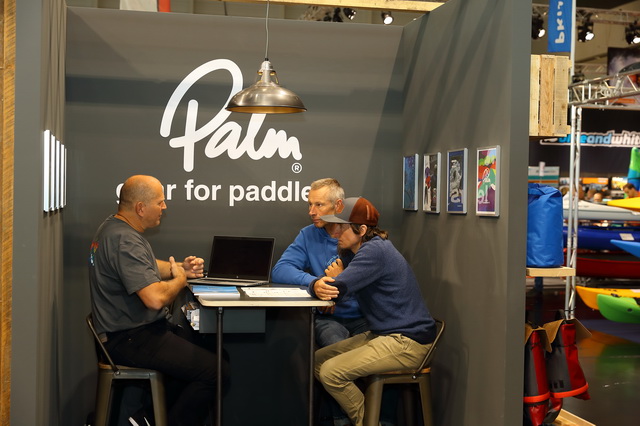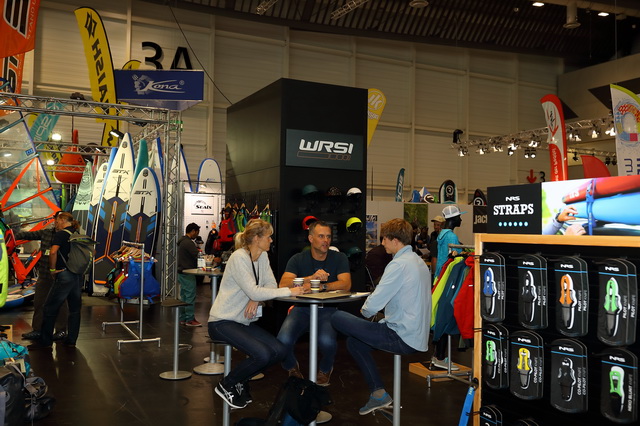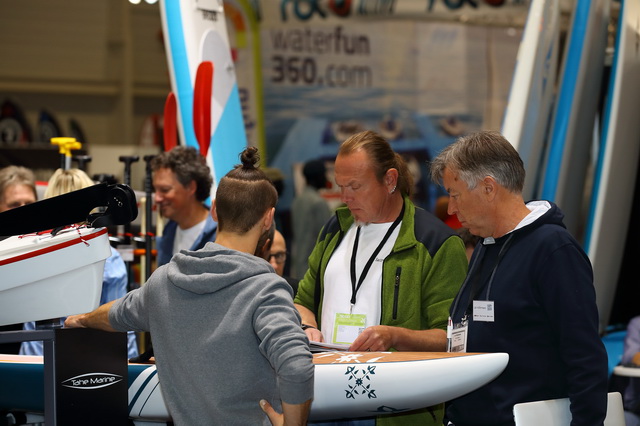With the rise of COVID and increased demand for paddlesport products leading to in-store shortages, for 2021, pre-orders are back and bigger than ever, bringing good news and security for the market. The challenge of 2021 will be, can we deliver?

Paddlesport dealers and retailers worldwide had one thing in common this spring and summer. As COVID restrictions forced factory shutdowns or changes in workplace safety regulations, manufacturers struggled to meet product demand, and paddlesport products, from boats and boards to accessories, were “sold out.” Far from being a damper on next year’s sales, one benefit has been the return of the pre-order.
While pre-orders never went away, the past decade’s trend has been increasingly smaller orders placed later. Then, COVID shut down factories in Asia, and the rest of the world quickly followed. Lockdowns in January, February, and March significantly impaired companies’ ability to produce and deliver products on schedule. Come spring and summer, unexpectedly high demand for paddlesport goods and services caught the industry by surprise.
The majority of retailers had nothing left to sell come mid-summer, with few options for resupply. Now, for 2021, pre-orders are seeing a comeback. Inevitably, this is partly due to shops’ desire to make sure they have enough stock this coming season. It is also partly thanks to manufacturers aggressively encouraging pre-orders to make sure they can prepare to meet demand.
“For 2021, pre-orders are seeing a comeback. Inevitably, this is partly due to shops’ desire to make sure they have enough stock this coming“
“For a long while,” explains Palm Equipment’s Paul Robertson, “retail has relied on suppliers to be their warehouse. The reality is that physically and financially, suppliers can’t do this and continue to give the sort of support expected. So rightly, pre-orders have been encouraged as it gives everyone some security. For a retailer in the current high demand situation, it’s probably the only way they will get goods to sell.”
It is hard to find a manufacturer or supplier who is not in favor of the pre-order. At Jobe Sports International, explains William Doornekamp, “We always had dealers pre-ordering, but this year we have an exponential rise in pre-orders due to COVID.” Doornekamp is not complaining. “In the long term,” he continues, “this makes for a healthier market for everyone as we can maintain expectations from each other.

Pre-orders bring many benefits besides securing a specific product for one particular customer or easing the burden of product storage on the manufacturer. Increased pre-orders reduces the risk of sitting on stock that won’t sell and can help drive interest and generate awareness for new products. They can also help predict the demand of products accurately, whether new or established classics. They can also help eliminate old stock or items that don’t sell as companies or dealers offer discounts and special deals with advance orders in a win-win for the manufacturer, retailer, and consumer.
In theory, another advantage of the pre-order is that they allow companies to devote time and resources to developing new products and innovations rather than scrambling to keep up with (catch up) with demand. However, given the world’s current state, there is a fear that pre-orders will do little to guarantee delivery, especially with many in the paddlesport industry dependent on production (and shipping) from foreign markets.
“While several companies in the industry manufacture almost exclusively in-house, and there are great examples of bespoke products made locally, if you break it down to examine where most of the parts come from, the road will most often lead to Asia.“
In the past year, companies whose production is all under one roof were perhaps better able to meet demand, albeit not on their standard timeline. Those better able to maintain production and delivery were rewarded with new partnerships, as dealers and retailers looked to find any products available for sale. It is a not insignificant advantage, and it begs the question, will it trigger a return to in-house production? For the majority of companies, the answer is likely, no, at least not right now.
Explains Palm Equipment, “unless you can do end-to-end manufacturing, you’ll need a supply chain, so you will always need to rely on others somewhere.” While several companies in the industry manufacture almost exclusively in-house, and there are great examples of bespoke products made locally, if you break it down to examine where most of the parts come from, the road will most often lead to Asia. “Asia is, for now, still the go-to for most brands, simply based on scale, economies, and often know-how,” says Robertson.

Even end-to-end in-house manufacturing does not always guarantee timely delivery. In 2020, even smaller companies where production is all under one roof, such as Czech powerhouse Gumotex, struggled to meet product demand and appreciate the benefits of the pre-order. “This year, we struggled with backorders to a large extent. For this reason, all our partners have learned from this situation and have already sent pre-orders,” explains Radka Bartošová, Gumotex’s Head of Sales: Boats & Outdoor.
Although pre-orders are back in force, production and delivery are far from guaranteed, especially when considering the rising shipping rates and delivery times. The challenge of 2021 will be, can we deliver? The coronavirus, in many ways, has shattered the illusion of a predictable and confident future. Knowing exactly how many products you need to make or how many you will receive provides a comforting opportunity to grasp some semblance of control in these tumultuous times.
As we seek to regain our hold on the year ahead, the pre-order is just a short term solution. Maybe COVID will be the spark of the next “revolution.” There may be more drastic changes on the distant horizon for some companies that portends a different industry future. In five years, will the twin pressures of guaranteeing delivery and environmental sustainability have driven production back closer to home, or will we be ever more dependent on external production to meet a still increasing demand?
Who knows? For the time being, get your orders in.
By: KS Publishing Editorial Team.
Article published in the 2021 Paddler’s Guide




